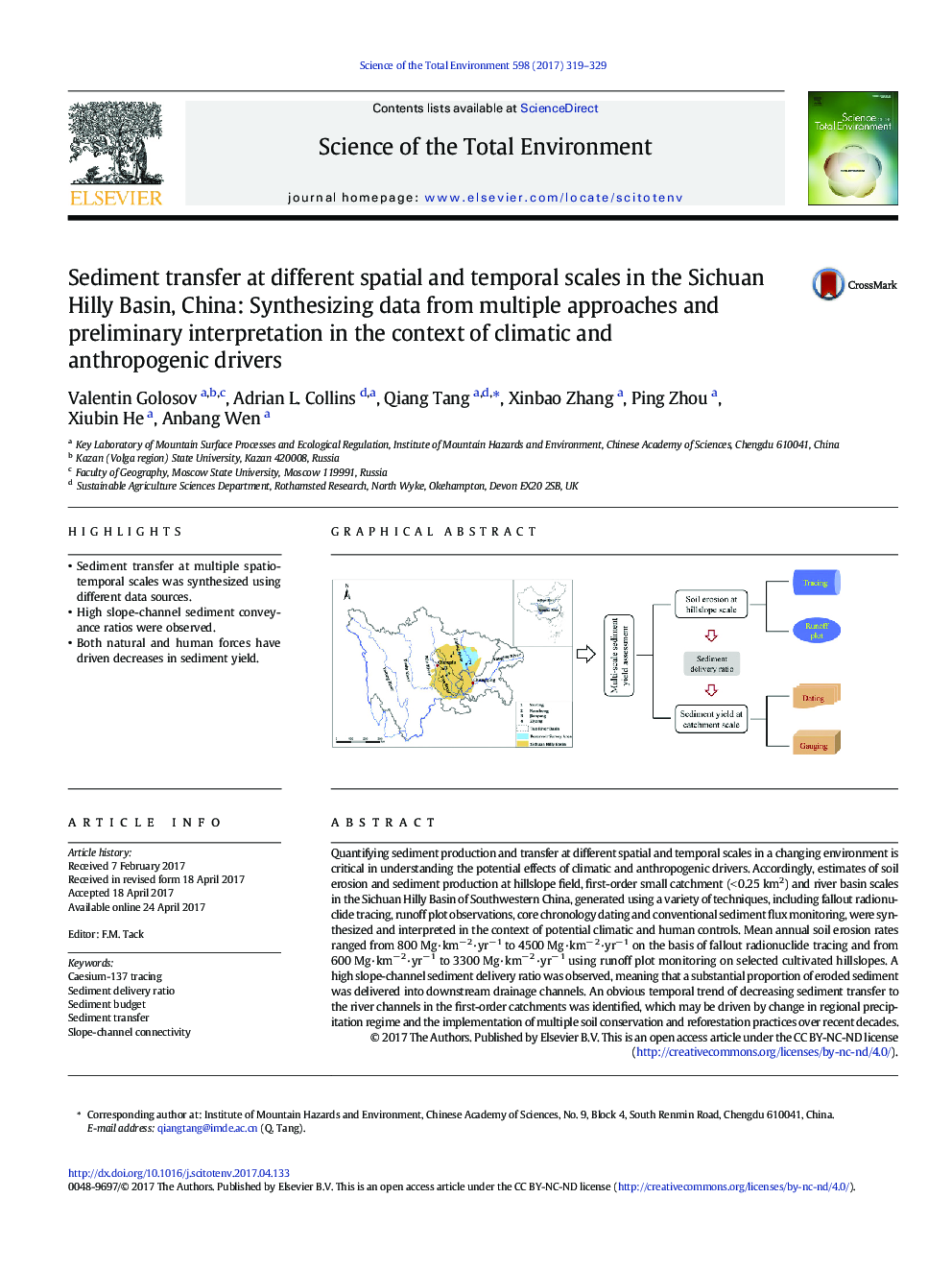| Article ID | Journal | Published Year | Pages | File Type |
|---|---|---|---|---|
| 5750947 | Science of The Total Environment | 2017 | 11 Pages |
â¢Sediment transfer at multiple spatio-temporal scales was synthesized using different data sources.â¢High slope-channel sediment conveyance ratios were observed.â¢Both natural and human forces have driven decreases in sediment yield.
Quantifying sediment production and transfer at different spatial and temporal scales in a changing environment is critical in understanding the potential effects of climatic and anthropogenic drivers. Accordingly, estimates of soil erosion and sediment production at hillslope field, first-order small catchment (< 0.25 km2) and river basin scales in the Sichuan Hilly Basin of Southwestern China, generated using a variety of techniques, including fallout radionuclide tracing, runoff plot observations, core chronology dating and conventional sediment flux monitoring, were synthesized and interpreted in the context of potential climatic and human controls. Mean annual soil erosion rates ranged from 800 Mg·kmâ 2·yrâ 1 to 4500 Mg·kmâ 2·yrâ 1 on the basis of fallout radionuclide tracing and from 600 Mg·kmâ 2·yrâ 1 to 3300 Mg·kmâ 2·yrâ 1 using runoff plot monitoring on selected cultivated hillslopes. A high slope-channel sediment delivery ratio was observed, meaning that a substantial proportion of eroded sediment was delivered into downstream drainage channels. An obvious temporal trend of decreasing sediment transfer to the river channels in the first-order catchments was identified, which may be driven by change in regional precipitation regime and the implementation of multiple soil conservation and reforestation practices over recent decades.
Graphical abstractDownload high-res image (214KB)Download full-size image
